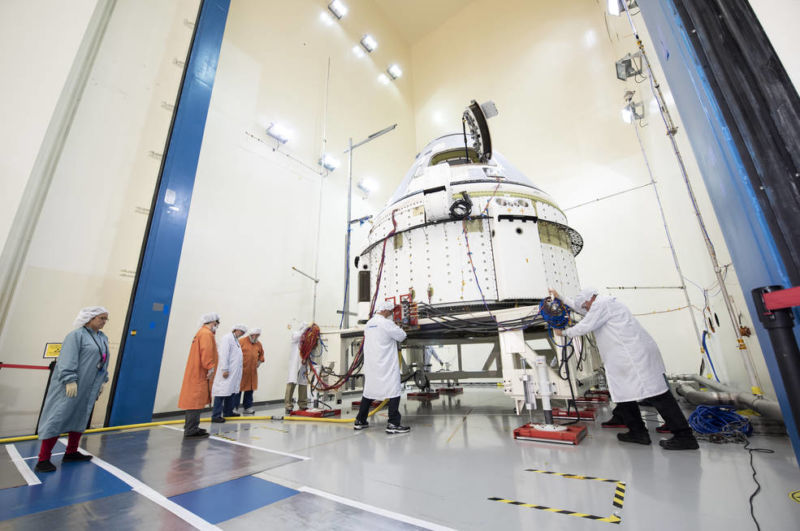
After several weeks of rumors, NASA has officially announced that the first test flight of Boeing's Starliner spacecraft will slip from April to August. However, it's worth noting that NASA still characterizes that as a "working date" rather than a confirmed launch date.
As part of the announcement, the agency also said that the first crewed test flight of Starliner to the International Space Station—which theoretically could come before the end of 2019, but now seems doubtful—will be of extended duration. "NASA’s assessment of extending the mission was found to be technically achievable without compromising the safety of the crew,” said Phil McAlister, director of the commercial spaceflight division at NASA Headquarters, in a news release. The agency did not say how many months the crew would stay on station.
Extending Starliner's first flight gives NASA more options as it seeks to keep its crew members on the space station. In February, the space agency also began exploring the possibility of buying additional Soyuz rides to the space station through September, 2020, as it waits for Starliner and SpaceX's Dragon spacecraft to begin operational service. Sources have indicated that this may also be one way to funnel more money to Boeing above its fixed price contract value in the commercial crew program, as NASA will in effect be "purchasing" these seats as part of an operational mission.
Boeing has so far had little to say about any technical problems that have cropped up with Starliner's development. After suffering a significant setback during preparations for a launch pad abort test in June 2018, the company managed to keep those problems from going public for about a month. Nearly a year later, Boeing still hasn't conducted that test firing of Starliner's launch abort system, which was originally due to occur in mid-2018. While the abort test is mentioned in NASA's news release, a new date has not been given.
Officially, the company says the orbital flight test delay from April to August has come because more time is needed to allow its engineers to test and validate Starliner's performance.
"We remain diligent, with a safety-first culture,” said John Mulholland, vice president and program manager for Boeing’s Commercial Crew Program. “While we have already made substantial progress this year, this shift gives us the time to continue building a safe, quality spacecraft capable of carrying crews over and over again after a successful uncrewed test, without adding unnecessary schedule pressure.”
The official delay provides more evidence that SpaceX appears to have a pretty strong lead in the effort to become the first company to privately launch humans into orbit. After its largely successful test flight a month ago, SpaceX has been refurbishing that crewed Dragon for an in-flight abort test later this spring. A crewed flight of Dragon seems possible before the end of this year, provided that ongoing tests and reviews continue as anticipated.
Bagikan Berita Ini














0 Response to "Starliner’s first flight delayed, crew mission not likely before 2020 - Ars Technica"
Post a Comment